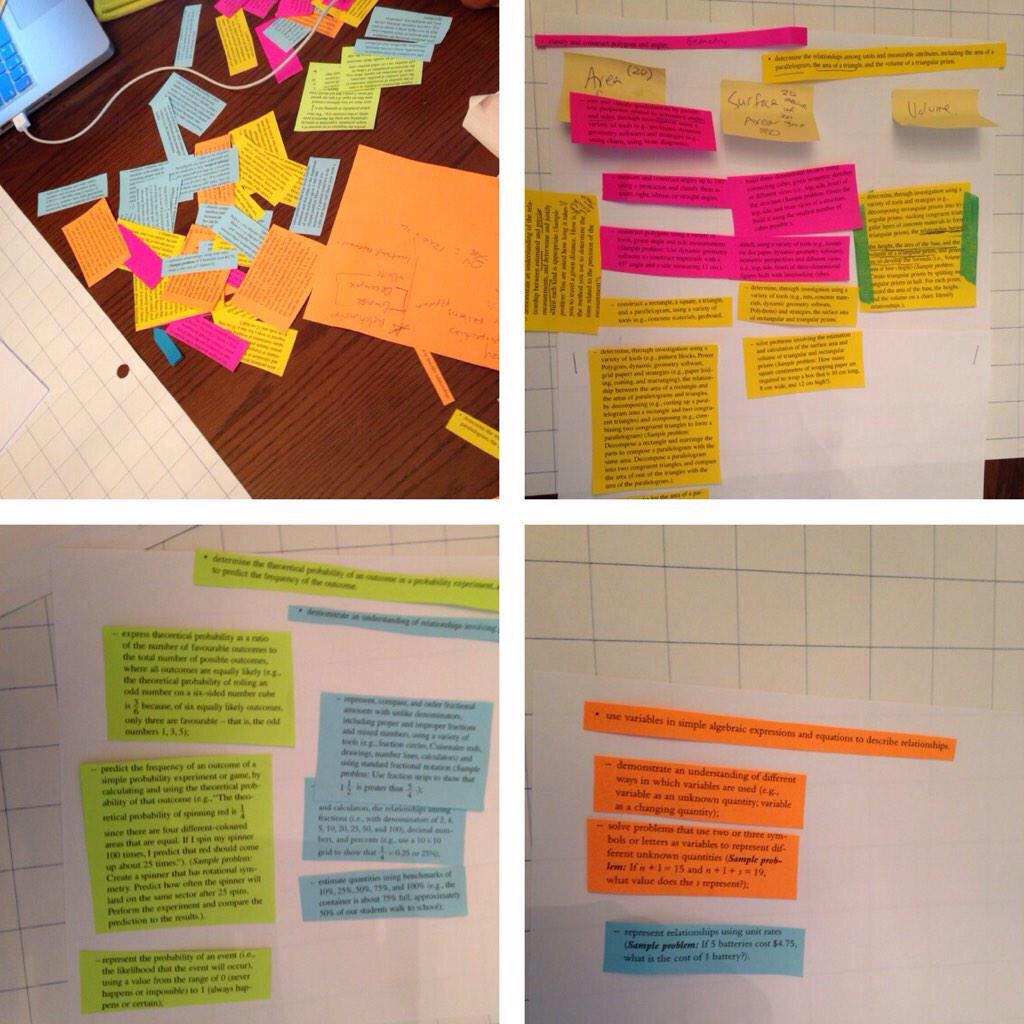One of the greatest challenges teachers face is developing a healthy work-life balance, particularly when it comes time to write reports or meet with parents/guardians. While I am by no means an expert on this topic (as anyone who knows me will attest), I have learned a few strategies which have helped me immensely during the busiest times of year. I spent so much of my early career feeling overwhelmed during these times that if even one of these things helps someone out there, I’ll be happy.
1) Use jot notes to stay focused.
Before sitting down to write detailed comments on academic subjects or learning skills, I take a few minutes to go over my class list and write some point-form notes, particularly for learning skills. This gives me an overview to refer to while writing them in full later. It also helps me to keep my thoughts focused, as my “jot notes” are typically divided into categories: what the student does well, areas for improvement, and a specific next step or two.
Jot notes are also key for staying focused during parent/teacher interviews. I keep a notebook with a page for each student. I write my thoughts on the page in point form and refer to it during interviews. I can also use the space to write down anything important that comes up in the interviews.
2) Write comments as units are finished.
With subjects where you are expected to report on multiple strands, particularly Mathematics, you can easily find yourself needing to write comments about a unit you haven’t touched since the early part of the term. My teaching partner (who teaches English and Mathematics to my French Immersion students) introduced me to the idea of writing comments for a particular strand as he finishes the units. It had never occurred to me before, but it really does save time and it makes your comments more meaningful as the information is fresh in your mind.
3) Start early and do a little bit each day.
You know reporting deadlines well in advance, and we all have at least a few students whose comments could be written several weeks early (again, particularly for learning skills). Your student who came to you as an independent, respectful, hard working student on the first day of school and has continued to be exemplary in all the learning skills throughout the term? You can probably write that comment earlier than others. I don’t say this to take away from that student’s work or achievement – I just personally find that those comments can often be “safely” written a few weeks earlier than some others, and that doing so helps me free up time later on. You can always tweak comments as needed closer to the deadline.
I also try to break the work up into chunks – either by working on a few students a day or by working on a specific subject each day. 40 minutes of prep time isn’t much to work with, but when you’re doing a little bit at a time, it makes it feel like much less of a daunting task.
4) Write your comments in a word processor so that you can save them.
There are a lot of good reasons to want to work in a word processor (like Microsoft Word or Open Office) rather than your board’s reporting software. For one thing, word processors aren’t subject to system downtime, so you don’t have to worry about the board software being updated or worked on. I also find that my board’s software tends to suffer from some crashing problems from time to time, which can cause me to lose work even though the software is supposed to save your input regularly. There is nothing more frustrating than spending twenty minutes on a student’s learning skills comments only to have the browser crash and all of that work disappear. Word processors are often better at identifying and correcting spelling/grammar mistakes than your board software, so you save time proofreading.
I also like to save my comments from term to term (and year to year) because they can help me out when writing reports the next time. I will often refer back to my previous comments on a student’s learning skills when writing reports, and I would really rather not take out and re-file 30 earlier report cards to do so. Sometimes when I’m feeling lost or stuck on how to say something, I refer back to previous years when I know I’ve made a similar comment. It helps with inspiration!
You can also easily work on reports from school and home (not that I’m advocating taking work home… in a perfect world, that wouldn’t be necessary) when you’ve been working in a Word document. I save it on a flash drive that I keep on my keychain, so I’m not likely to forget it in one place or the other.
5) Use a timer for parent/teacher interviews.
We are given very little time in my board (and I suspect many others) for conducting interviews. It can be very hard to cut off an interview at the 15 minute mark, but it’s really vital to do so if you are going to keep your interviews rolling, keep waiting families happy, and keep you from being there way longer than you should be. I’m not suggesting that you use a loud buzzer to let parents/guardians know that time is up, but a simple timer with an inoffensive beep (or a phone set to vibrate) can be enough to keep things moving. Often they don’t realize how short 15 minutes really is and don’t know when they are going past their allotted time.
6) Communicate regularly with parents/guardians.
You really shouldn’t be meeting with every single student’s family during interview time. You shouldn’t need to. In some cases it’s unavoidable, I suppose, but I have found that by communicating regularly about students’ work in class, some interviews can be avoided. Many parents/guardians “just want to know how (their child) is doing” and would be satisfied by quick notes home in the agenda, quick e-mails or phone calls, etc. throughout the term.
– – – – –
If anyone out there has other tips to stay on top of things during reporting periods, I’m all ears! I can always use more help developing a balance.














